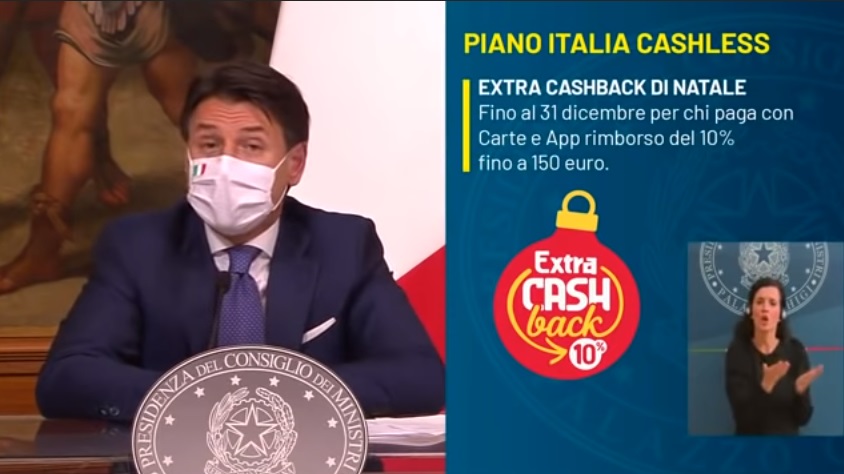That’s why I scrapped Conte’s cashback. Signed: Draghi

Cashback has a regressive character, it has favored the wealthier classes, the northern areas and the inhabitants of the big cities. Here are some of the considerations made by Draghi in the council of ministers to explain the cashback stop
Cashback has a regressive character and is intended to direct resources towards the categories and areas of the country in better economic conditions. The greatest concentration of alternative means to cash is registered among the inhabitants of the North and, more generally, of the large cities. The measure risks accentuating the inequality between incomes, favoring the richest families, with a presumably lower propensity to consume, causing a multiplicative effect on GDP that is not sufficiently significant compared to the cost of the measure.
These were some of the considerations made by the Prime Minister, Mario Draghi, in the Council of Ministers, explaining the reasons underlying the suspension of the measure starting from 1 July 2021: "Cashback, Draghi said, has a regressive and it is intended to direct resources towards the categories and areas of the country in better economic conditions ".
The greatest concentration of alternative means to cash is registered among the inhabitants of the North and, more generally, of the large cities, with a householder under the age of 65, a medium-high income and a status other than that of a worker or unemployed.
Although there are no specific data on this to date, it is presumable that these categories benefit the most from cashback and related bonuses and super-bonuses.
The measure therefore risks accentuating the inequality between incomes, favoring the richest families, with a presumably lower propensity to consume, causing a multiplicative effect on GDP that is not sufficiently significant compared to the cost of the measure.
Furthermore, there is no objective evidence of the greater propensity to use electronic payments by members of the Program. Almost 73 per cent of households already spend more than the ceiling envisaged by the provision through cards.
Therefore, most could receive the maximum benefit even without stepping up their card use. On the other hand, it is unlikely that those without cards or currently using them for an amount below the ceiling will actually be able to reach it, because most of them cannot spend those amounts. On average, the families of the poorest fifth should increase their spending on cards by almost 40 percent, while the wealthiest by only 1 percent.
This is indicative of the fact that the transactions that have reached the target for the disbursement of the reimbursement (50 transactions in the semester) represent only 50% of the total transactions recorded and that approximately 40% of the beneficiaries have in any case transactions such as to suggest that they are people already accustomed to the use of electronic money.
Draghi also underlined how the onerousness of the measure, equal to 4.75 billion euros, must be assessed not only in relation to the expected benefits, but also the cost and the current economic and social framework, which saw – in 2020 – 335 thousand new families and over 1 million more people entering absolute poverty (Istat data).
Given the regressive effects, costs and application criticalities, as of today, significant effects on revenue cannot be estimated. On the contrary, electronic transactions are likely to grow as a result of cashback, especially in sectors that are already low in evasion, such as large-scale distribution which, according to Istat, absorbs almost half of retail spending, rather than critical ones.
This is a machine translation from Italian language of a post published on Start Magazine at the URL https://www.startmag.it/innovazione/ecco-perche-ho-rottamato-il-cashback-di-conte-firmato-draghi/ on Thu, 01 Jul 2021 07:37:34 +0000.
